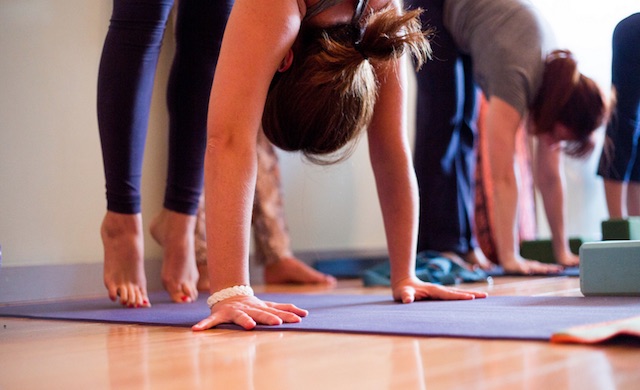Headstand is the king of all asanas. Backbends replace espresso. Arm balances look great on Instagram.
But which of these extravagant asanas absolutely must be a part of every practice? None of them.
Over the years, yogis have waxed psychological about the “issues in our tissues” perspective. That is, certain postures seem to have certain effects beyond the physical. Forward fold and you might feel more relaxed. Try an upward-facing bow and you’ll feel inspired and energized. Take a one-legged pigeon fold and you just may have a cry.
Armed with this knowledge (which, one could argue, is a rudimentary understanding of the prana vayus), the yogi might be able to choose postures and sequences based on his or her needs in each moment: stress relief, fatigue, indigestion, what have you.
But is there one pose that should be a part of every yoga practice? As a multi-disciplinary teacher and student myself, I try to avoid the word “should.” It seems dogmatic, preachy and restricting. After all, nobody likes being should upon. But in this case, allow me to climb onto my fair trade soapbox for a moment:
The only posture that truly matters is savasana.
Yes, savasana. Corpse pose. The one where all of our hard won strength and flexibility are useless. The one where the tightest guy in the room might actually be the master.
The only pose that every practice needs is savasana.
Savasana is the great equalizer. It requires no flexibility, no years of experience, no Lycra and no wooden blocks. What it does require is openness, as the palms turn up, the toes fall outward, and the body lies in a posture of reception.
And being open is far more important than being flexible.
As a teacher, I often find myself around yogis who are very talented movers. And what I see is that those who have the most movement skill are often the ones who struggle with stillness. In dancer’s pose they can touch the head to the sole of the foot; but when seated for pranayama they grow visibly anxious and twitchy.
Some of the very first words in Patanjali’s Yoga Sutra tell us that yoga is “the calming of the fluctuations in the mind.”(1.2) You know the fluctuations: the ever-present stream of consciousness that fills your mind, one self-doubting idea after another.
When we find ourselves immersed in a physical yoga practice, we may find that the mind appears to quiet. The thoughts remain in the present moment: lift big toe. Roll weight to outer heel. Point knee over third toe. That one-pointed concentration fills us with relief as our stress and worries seem to fade into the background.
Finally, after 60 minutes or more, the teacher stops speaking and the students lie down. Ironically, once the body stops moving, the mind seems to grow more active. The mind no longer has all of these satisfying little tasks with which to occupy itself.
It is in this moment that our movement practice becomes a practice of stillness. As Gary Kraftsow calls it, a practice of “moving into stillness.” It is in this moment that we might begin to understand something crucial:
The rest of our practice was simply a preparation for savasana.
Think of it this way: if yoga is a practice of stilling the mind, we’ll need to approach the challenge methodically, from the gross to the subtle. First we train the physical form to grow still, to get all of our movements out of the way so we can lie with all the stillness of a dead body. We can lie with the confidence that there is nothing more important to be doing.
And maybe, just maybe, by learning to still the body, we will one day develop the skill to still the mind.
Relephant offering:
Yoga Wheel: for opening up your back, hips, chest, & shoulders.
Author: Banyan Gallagher
Editor: Emily Bartran
Photo: Brittany White Photography (used with permission)

 Share on bsky
Share on bsky







Read 38 comments and reply